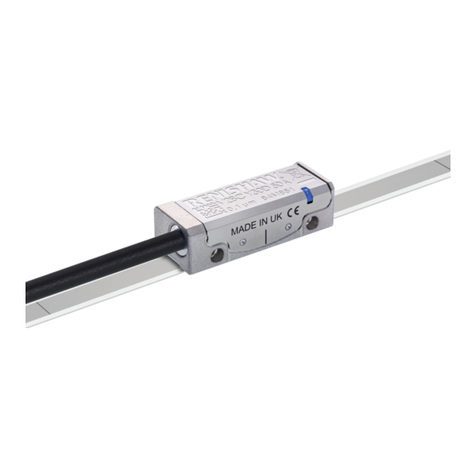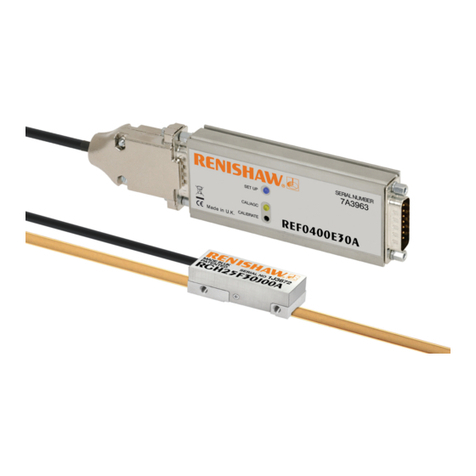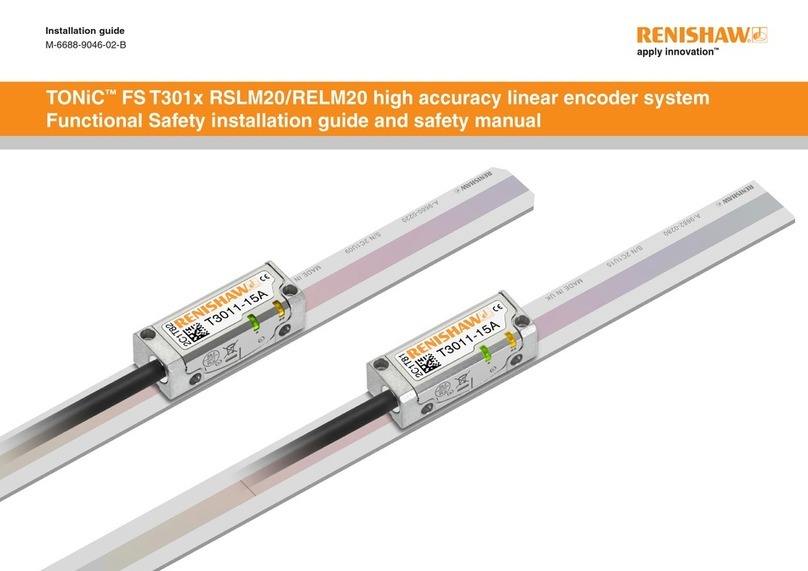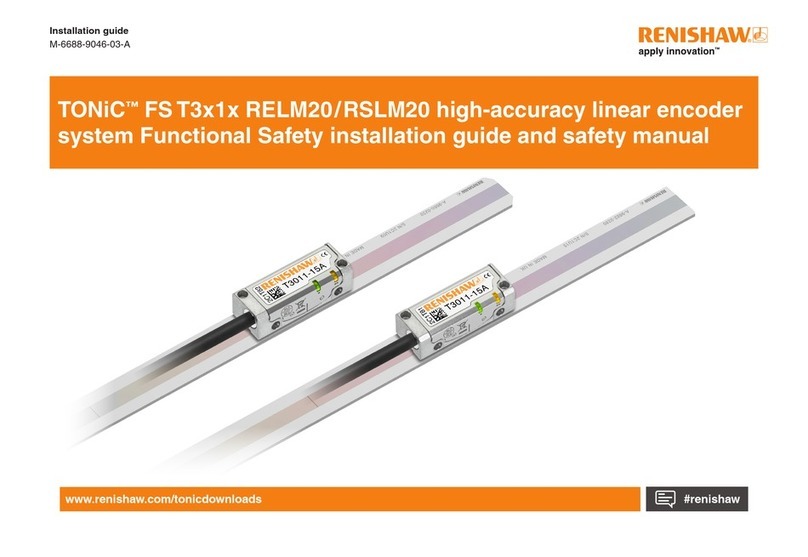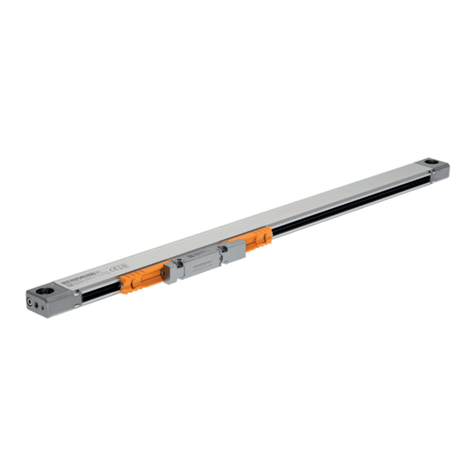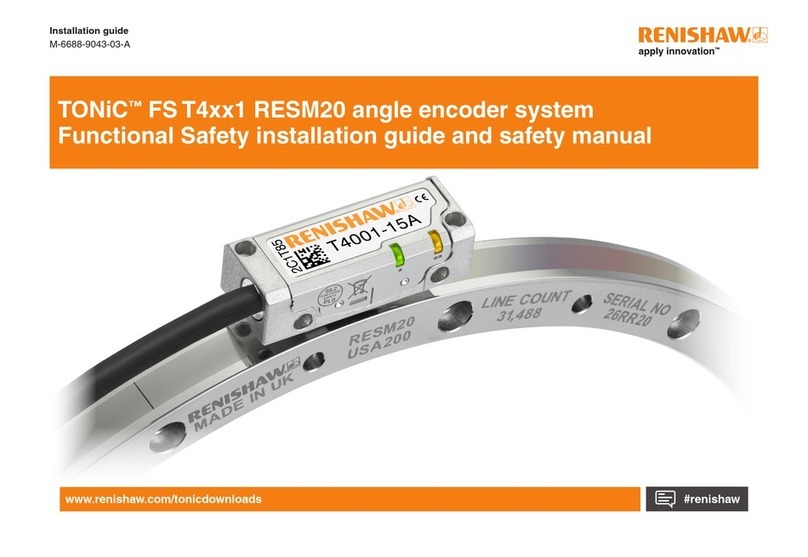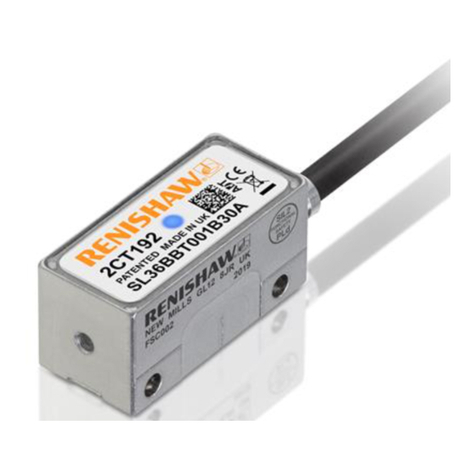
TONiC RKLC20-S linear installation guide 1
The use of this symbol on Renishaw products and/or accompanying documentation indicates that the product
should not be mixed with general household waste upon disposal. It is the responsibility of the end user to
dispose of this product at a designated collection point for waste electrical and electronic equipment (WEEE)
to enable reuse or recycling. Correct disposal of this product will help to save valuable resources and prevent
potential negative effects on the environment. For more information, please contact your local waste disposal
service or Renishaw distributor.
Product compliance
Renishaw plc declares that TONiC complies with the applicable standards and regulations.
A copy of the EC Declaration of Conformity is available on request.
FCC compliance
This device complies with part 15 of the FCC Rules. Operation is subject to the following two conditions: (1)
This device may not cause harmful interference, and (2) this device must accept any interference received,
including interference that may cause undesired operation.
The user is cautioned that any changes or modications not expressly approved by Renishaw plc or
authorised representative could void the user’s authority to operate the equipment.
This equipment has been tested and found to comply with the limits for a Class A digital device,
pursuant to part 15 of the FCC Rules. These limits are designed to provide reasonable protection
against harmful interference when the equipment is operated in a commercial environment.
This equipment generates, uses, and can radiate radio frequency energy and, if not installed
and used in accordance with the instruction manual, may cause harmful interference to radio
communications. Operation of this equipment in a residential area is likely to cause harmful
interference in which case the user will be required to correct the interference at his own expense.
NOTE: This unit was tested with shielded cables on the peripheral devices. Shielded cables must be used
with the unit to ensure compliance.
Patents
Features of Renishaw’s encoder systems and similar products are the subjects of the following
patents and patent applications:
EP1173731 JP4750998 US6775008 CN100543424 EP1766334
JP4932706 US7659992 CN100507454 EP1766335 IN281839
JP5386081 US7550710 CN101300463 EP1946048 US7624513
JP5017275 CN101310165 US7839296 EP1957943 EP2390045
CN1314511 EP1469969 JP5002559 US8466943 US8987633
Further information
Further information relating to the TONiC encoder range can be found in the TONiC system Data sheet
(L-9517-9337). This can be downloaded from our website www.renishaw.com/encoder and is also available
from your local representative. This document may not be copied or reproduced in whole or in part, or
transferred to any other media or language, by any means without the written prior permission of Renishaw.
The publication of material within this document does not imply freedom from the patent rights of Renishaw plc.
The packaging of our products contains the following materials and can be recycled.
Packaging Component Material ISO 11469 Recycling Guidance
Outer box Cardboard Not applicable Recyclable
Polypropylene PP Recyclable
Inserts Low Density Polyethylene Foam LDPE Recyclable
Cardboard Not applicable Recyclable
Bags High Density Polyethylene Bag HDPE Recyclable
Metalised Polyethylene PE Recyclable
c
REACH regulation
Information required by Article 33(1) of Regulation (EC) No. 1907/2006 (“REACH”) relating to products
containing substances of very high concern (SVHCs) is available at:
www.renishaw.com/REACH
Disclaimer
RENISHAW HAS MADE CONSIDERABLE EFFORTS TO ENSURE THE CONTENT OF THIS DOCUMENT
IS CORRECT AT THE DATE OF PUBLICATION BUT MAKES NO WARRANTIES OR REPRESENTATIONS
REGARDING THE CONTENT. RENISHAW EXCLUDES LIABILITY, HOWSOEVER ARISING, FOR ANY
INACCURACIES IN THIS DOCUMENT.






